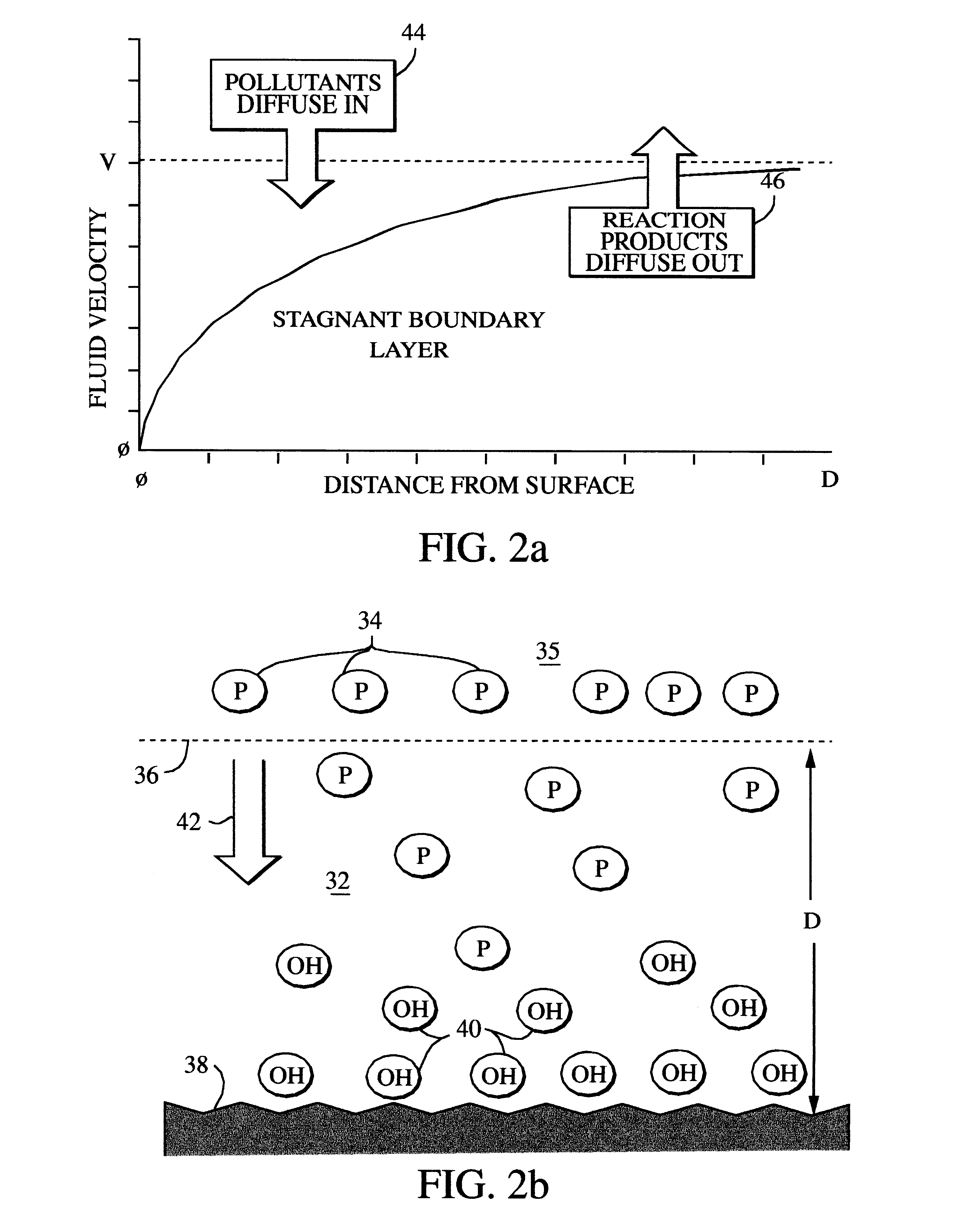Electrolytic cell with porous surface active anode for removal of organic contaminants from water and its use to purify contaminated water
a porous surface, active anode technology, applied in the direction of electrolysis components, multi-stage treatment of water, manufacturing tools, etc., can solve the problems of insufficient pre-treatment methods, high raw material cost of sodium bisulfite and lime, and no longer allowed methods for disposing of contaminated water
- Summary
- Abstract
- Description
- Claims
- Application Information
AI Technical Summary
Benefits of technology
Problems solved by technology
Method used
Image
Examples
example 1
Remediation of Acetone Contaminated Water Using Stainless Steel Packing as Anode
A sample of municipal drinking water was spiked with acetone to a concentration of 24 milligrams / liter (24 ppm). The electrolytic cell of this invention was loaded with stainless steel packing as the porous anode, and the spiked sample run through a single pass of the cell at a flow rate of 1 gallon per minute (1 gpm). The results are listed in Table I.
The single pass at 1 gpm resulted in a 25% reduction in acetone contamination, even with a low surface area, non-adsorbing stainless steel packing.
example 2
Remediation of Process Waste Water
Two gallons of process waste water containing mixed organic contaminants was passed through the electrolytic cell of this invention for fifteen minutes at a volumetric flow rate of five gallons per minute. The results are shown in Table II.
The reduction of organic contamination from 62 ppm to 1.25 ppm without the addition of any external reagents or catalysts clearly demonstrates the efficacy of the electrolytic cell of this invention.
example 3
Remediation of Contaminated Groundwater
A sample of groundwater was single-passed through the electrolytic cell of this invention. The results are summarized in Table III.
The results achieved after a single pass through the electrolytic cell of this invention are less than two orders of magnitude less than the original sample concentrations.
PUM
| Property | Measurement | Unit |
|---|---|---|
| Fraction | aaaaa | aaaaa |
| Fraction | aaaaa | aaaaa |
| Fraction | aaaaa | aaaaa |
Abstract
Description
Claims
Application Information
 Login to View More
Login to View More - R&D
- Intellectual Property
- Life Sciences
- Materials
- Tech Scout
- Unparalleled Data Quality
- Higher Quality Content
- 60% Fewer Hallucinations
Browse by: Latest US Patents, China's latest patents, Technical Efficacy Thesaurus, Application Domain, Technology Topic, Popular Technical Reports.
© 2025 PatSnap. All rights reserved.Legal|Privacy policy|Modern Slavery Act Transparency Statement|Sitemap|About US| Contact US: help@patsnap.com



